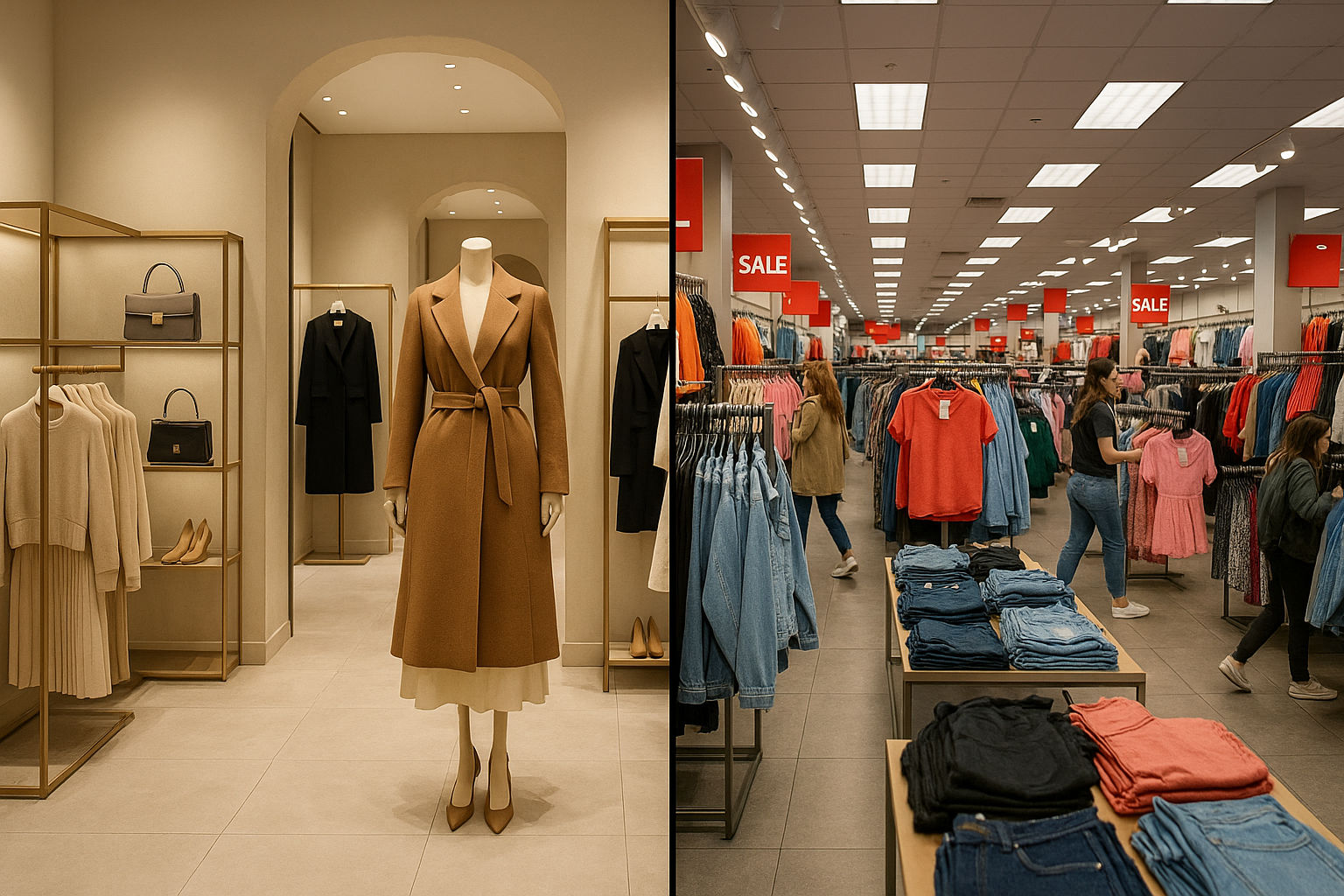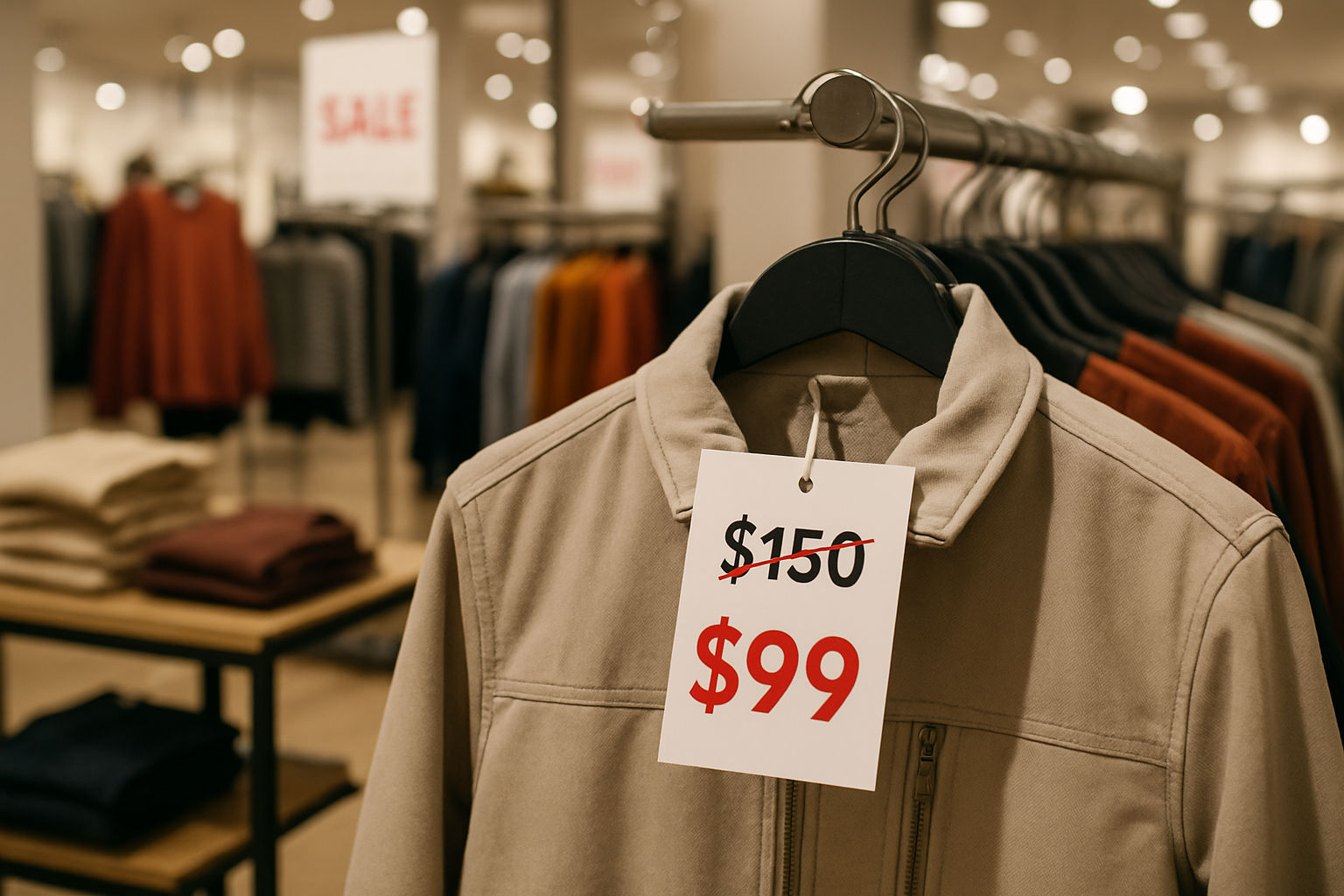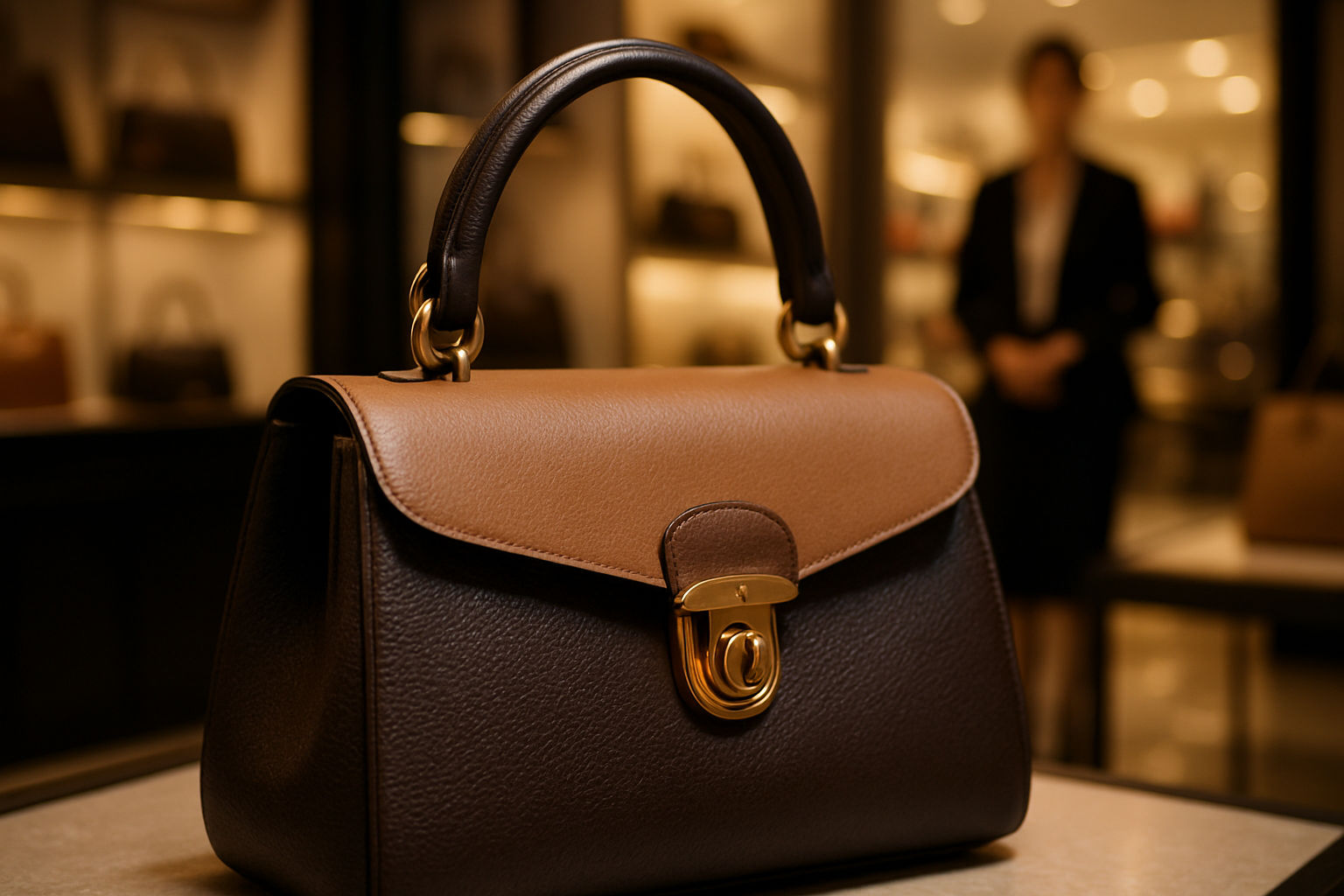
Fashion retail pricing psychology - Value-based and anchor pricing strategies
Ever wonder about the method behind the prices you see in fashion retail? Like why that stylish top is $29.99 instead of an even $30?
That's fashion retail pricing psychology at play. It's a subtle art, designed to influence how you perceive value and, ultimately, whether you decide to buy.
Retailers use various psychological pricing methods to make their products more appealing.
In this article we'll discuss charm pricing, anchor pricing, prestige pricing and other pricing techniques you yourself can use in order to increase your sales.
By understanding these pricing strategies, you'll be better equipped to make informed choices while shopping. Next time you're browsing, keep an eye out for these subtle influences!
Value-based pricing in fashion retail
Why can some fashion brands charge a fortune while others offer incredibly low prices? The answer often lies in value-based pricing. Rather than simply covering costs or matching competitor prices, this strategy sets prices based on how much value customers place on the product. Let's dive into how this works in the fashion world.
Consider luxury brands. They command high prices because shoppers associate them with superior quality, exclusivity, and status. On the other hand, fast-fashion retailers focus on affordability, attracting fashion enthusiasts who want trendy styles without a hefty price tag.
Effective value-based pricing requires a deep understanding of the target customer. Fashion retailers conduct surveys, organize focus groups, and analyze shopping habits to determine what customers are willing to pay. The perceived value extends beyond the product itself, incorporating brand reputation, material quality, unique designs, and the overall shopping experience.
Retailers use marketing to enhance perceived value. Highlighting special features, emphasizing brand heritage, or securing celebrity endorsements are all tactics used to justify higher prices and create a sense of satisfaction with your purchase.
Presenting a range of fashion price points is another technique used in value-based pricing. By offering an ultra-premium option alongside more accessible choices, retailers can make mid-range items seem more appealing and of better value. It's all about shaping perception through context.
Limited edition items and exclusive collaborations also boost perceived value. These create a sense of uniqueness and scarcity, allowing brands to set higher prices based on the "get it before it's gone" mentality.
Value-based pricing requires constant evaluation. As customer preferences and trends change, fashion retailers need to reassess their pricing strategies to remain effective and keep you coming back. Now, let's check out how anchor pricing affects your perception of deals.
Anchor pricing techniques for fashion brands
Ever get the feeling that your favorite store is always having a sale? You're likely witnessing anchor pricing in action. This technique involves using a higher "anchor" price to make the current selling price appear incredibly appealing.
Here's a typical scenario: You see a jacket with an original price of $150 crossed out, now selling for $99. That $150 acts as the anchor, making the $99 price seem like a real steal. You feel like you're getting a great deal, even if the retailer planned to sell the item for $99 from the start.
Strategic product placement is another method. Retailers might place a $400 designer wallet next to a $150 one. Suddenly, the $150 wallet doesn't seem so expensive, does it?
Decoy pricing involves offering three options: a high-end item, a low-end item, and a carefully priced middle option. The middle option is designed to be the most attractive, subtly guiding you toward the retailer's preferred price point.
Luxury brands often showcase their most exclusive, expensive pieces prominently. These ultra-high-priced items make their other premium products seem more reasonable in comparison, creating a sense of relative value.
New collections are another opportunity for anchor pricing. Brands introduce new lines at higher initial prices, then offer limited-time discounts that feel extra valuable relative to those original prices.
Ethical use is essential for anchor pricing. No one wants to feel misled by inflated reference prices. The best retailers combine anchor pricing with genuine value, creating a win-win situation for both the brand and the customer.
Keep an eye out for these techniques when you're shopping. Understanding discounting strategies can help you make smarter purchase decisions and potentially snag some real deals. Speaking of high prices, ever wonder why some brands cost a month's rent? Let's get into prestige pricing.
Prestige pricing in high-end fashion
Why do some designer items cost more than a month's rent? Welcome to the world of prestige pricing. This strategy aims to create an image of exclusivity and luxury around fashion products by setting very high prices.
In high-end fashion, a high price tag serves several purposes. It signifies superior quality and craftsmanship, creates a perception of exclusivity, appeals to status-conscious consumers, and reinforces the brand's position in the luxury market. For some customers, the high price is part of the product's appeal.
Brands maintain their premium image by consistently pricing their products at the high end. A classic handbag from a top designer can cost thousands of dollars, reflecting the brand's commitment to quality and exclusivity.
Luxury brands often use price anchoring within their prestige pricing strategy. Offering a range of high-priced items creates reference points that make other premium-priced products seem more attainable.
A holistic approach is essential for prestige pricing, which often includes:
- Limited production runs to maintain scarcity
- Using materials and craftsmanship of exceptional quality
- Selling through exclusive distribution channels
- Creating high-end marketing and advertising campaigns
- Partnering with celebrities and influencers
The in-store experience also plays a crucial role. Luxury fashion retailers often offer white-glove service, personalized shopping experiences, and lavish store environments to justify prestige prices and reinforce the feeling of exclusivity.
While prestige pricing can be effective for established luxury brands, it is challenging for new entrants. Success depends on building a strong brand identity, delivering exceptional quality, and creating a perception of scarcity and exclusivity that justifies the high prices. But prestige isn't the only way to play the pricing game. Let's look at charm pricing and odd-even strategies.
Charm pricing and odd-even pricing strategies
Ever wonder why so many prices end in .99? It's not a coincidence. It's charm pricing and odd-even pricing at work, using how our brains process numbers to make prices more attractive.
Charm pricing involves setting prices just below a round number, usually ending in .99 or .95. The effect is subtle but powerful. Our brains tend to focus on the leftmost digit, so $24.99 feels noticeably cheaper than $25.00, even though the difference is only a penny.
Research supports this. Studies show that prices ending in 9 can increase sales compared to rounded prices for the same items.
Odd pricing, closely related to charm pricing, involves using odd numbers in price points, particularly those ending in 5 or 9. Odd prices often create the perception of a discount or promotion, triggering a "good deal" feeling that encourages impulse purchases.
Even pricing uses round numbers or prices ending in 0. These prices are often associated with quality and prestige, making them more suitable for luxury fashion brands. A high-end bag might be priced at $500 rather than $499 to maintain its exclusive image.
These strategies can be especially impactful when shopping online. With many options available, even small price differences can influence your decision. E-commerce sites use charm pricing to stand out in search results and increase click-through rates.
Savvy shoppers might view these tactics as manipulative. That's why the best retailers balance psychological pricing with transparency and genuine value, creating a positive experience for both the brand and the customer.
Next time you're browsing your favorite stores, watch for these pricing strategies. Understanding them can help you make smarter shopping decisions. And while those prices might seem set in stone, let's see how retailers use dynamic pricing to adapt on the fly.
Dynamic pricing in fashion retail
Ever notice prices changing on items you've been watching? That's dynamic pricing, a growing trend in fashion retail that allows brands to adjust prices in real-time based on various factors.
Dynamic pricing involves using advanced analytics and artificial intelligence to analyze data, including current demand, inventory levels, competitor pricing, and even weather. Retailers can then automatically adjust prices to maximize profits based on this information.
For example, if a particular style of clothing becomes popular, its price might increase automatically to capitalize on high demand. Conversely, if certain items aren't selling well, prices can be lowered to encourage sales and clear inventory.
Dynamic pricing is useful for markdown strategies. Instead of fixed schedules, retailers can adjust discounts based on real-time sales data, avoiding premature markdowns on popular items while ensuring slow-moving items get necessary price reductions.
Fashion depends on seasons and trends, and dynamic pricing accounts for this. Prices can adjust automatically based on the time of year, upcoming holidays, or emerging fashion trends. It's like having a pricing expert available 24/7.
A balance is necessary, as fluctuating prices can be unexpected in fashion retail. Smart brands are transparent about their pricing strategies and maintain open communication with customers.
Dynamic pricing offers significant advantages for fashion retailers:
- Better inventory management through balanced supply and demand
- Increased profit margins with precise pricing
- Improved competitiveness by quickly matching or beating competitor prices
- Ability to test price points and assess shopper response
- Greater flexibility in responding to market shifts or unexpected events
Dynamic pricing will likely become more common as fashion retail evolves. Brands can create fast-paced and responsive pricing strategies by leveraging data and technology. So, ready to put it all together? Let's dive into how to effectively implement pricing psychology in your fashion retail strategy.
Implementing effective pricing psychology in fashion retail
Ready to explore implementing pricing psychology in fashion retail? Brands use these techniques strategically to influence shopping decisions and boost sales.
When implementing these strategies, fashion retailers should:
- Test different price points to see what resonates with their specific audience
- Analyze sales data to find pricing sweet spots for different product categories
- Consider their overall brand positioning when setting prices
- Strategically use price anchoring and context in displays, both online and in-store
- Implement dynamic pricing systems for real-time optimization
The most effective approach is often to combine multiple pricing strategies. For example, a retailer might use prestige pricing for their premium collection, charm pricing for their everyday items, and dynamic pricing during sale periods to maximize inventory turnover.
Context matters tremendously in implementation. The same pricing strategy that works for a luxury boutique might be ineffective for a fast-fashion retailer. Understanding your target market's price sensitivity and value perception is essential for successful implementation.
Product categories often require different pricing approaches. Seasonal items might benefit from dynamic pricing, while staple products could use charm pricing to encourage consistent sales. Wholesale suppliers often use different pricing strategies when working with retailers versus selling direct-to-consumer.
Visual merchandising plays a crucial role in implementing pricing psychology. Strategic product placement, eye-catching price displays, and thoughtful store layouts can enhance the effectiveness of your pricing strategies and guide customers toward preferred price points.
For online retailers, website design and user experience are key implementation factors. Strategic placement of pricing information, thoughtful product categorization, and effective use of promotional badges can significantly impact how customers perceive prices and value.
By applying these psychological pricing methods thoughtfully, fashion brands can positively influence perception, encourage purchases, and boost profits while maintaining customer trust and satisfaction.
Making Sense of Fashion Pricing
Fashion retail pricing is a complex mix of psychology and strategy. By understanding tactics like charm pricing, anchor pricing, and value-based approaches, you gain insight into how brands influence your buying decisions. For retailers, the key takeaway is to balance these techniques with transparency and genuine value, fostering customer trust and long-term loyalty.
Read more about fashion retail:
- Fashion retail analytics tools - How to use data-driven insights
- Wholesale clothing negotiation - A comprehensive guide for buyers



